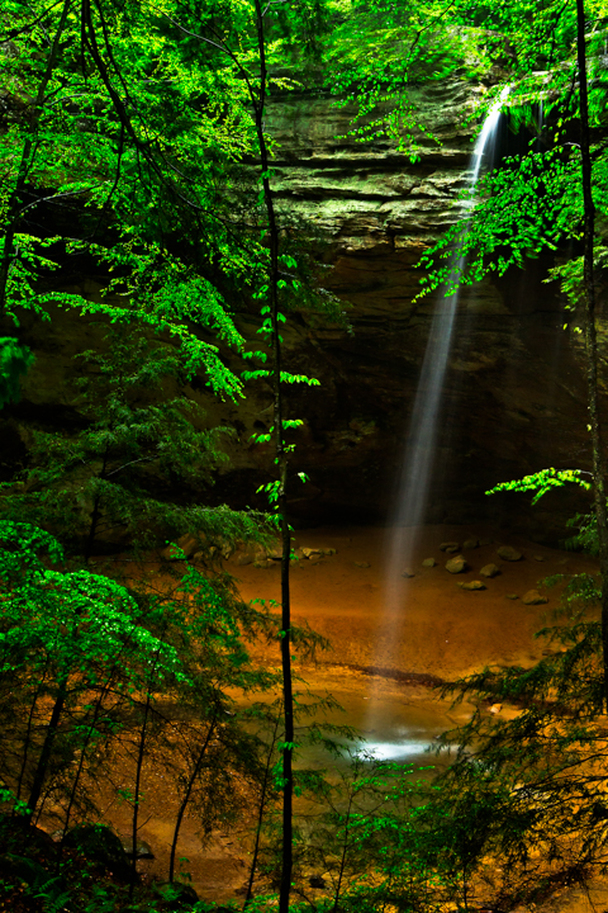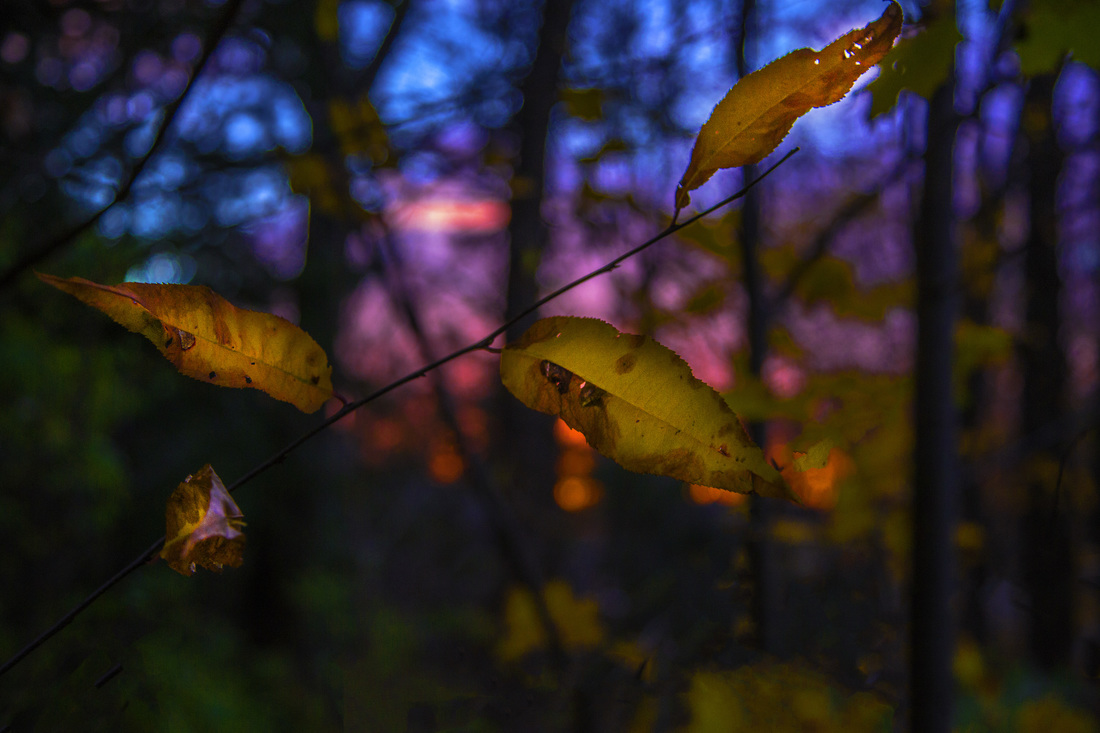So off I go. I arrive, still raining like crazy. I wrap my camera, already on the tripod, in a water-proof jacket and start walking. The jacket stays on the camera while setting up the tripod and getting everything ready. Then like the photographers of years gone by, I use the jacket as if it is a black cloth over a view camera. The end of the lens is secured with the jacket over the "sun guard" and the rest of the camera is covered completely.
Ducking under the jacket I set up the exposures, using an ISO of 400--which keeps the quality of the exposure for the overall scene. The flow of water has to be take at a range of shutter speeds because water flows at different rates; hence there can't be a fixed setting for the shutter.
So I bracket with shutter speeds.
This is for the water fall and creating a variety of possible looks, to decide later when back home.
Next, speed up the ISO to 1600, reduce the f stop to say, f8, and increase the shutter speed to 1/125 of a second--minimum. Focus on near, middle, and far away leaves. Sometimes, reduce the f stop to 5.6--OK because the 70-200 lens is an f 2.8. Rule of thumb: close the lens by two stops from its widest possible setting, to get sharpness. Had I used f 2.8 I risk softness, on even the best lenses.
Try to get an exposure that is spot on for the greenery at ISO 1600 and there will be little noise on a high quality camera, like the Canon 5D Mark III. If I'm one or two stops off, then noise creeps in.
So using that ISO 1600, minimum f 5.6 I should be up in the 1/250 of a second range or faster. Take several at my fastest shutter speed, of the near, middle, and far, and then combine them later at home at the PC.
I bracket everything I just described, because you never know... there just might be a shadowed area you'd like to bring out that was too dark in the "spot on" exposure, or a burned out spot of way too much light that I didn't notice at the time, and I would use a better exposure of that little spot, from another file.
This photograph has about 3-4 hours of post=processing, because the demands of a soft waterfall combined with sharp greenery is challenging and can only be done when well rested, not impatient, and well rested, did I say well rested? as in fresh and having fun. If the post-processing no longer is fun and a challenge to figure out, I stop immediately, save everything, turn off the computer and do something else entirely, that's enjoyable. Maybe I come back the next day or two days hence.
And yes, after about 2 hours, the 100% humidity did creep im to the camera, and I stopped immediately, walked and jogged back to the car, turned on the engine, and ran the heater on the camera, high speed and hot, for 15 minutes... then headed home. Canon will not "fix" a camera that has gotten moister inside. Might as well toss it, and make a claim on your Marine policy for cameras, because that camera is dead.
email me if you have questions or want to share your own experiences of shooting in torrential rain.
johnholliger@columbus.rr.com


 RSS Feed
RSS Feed